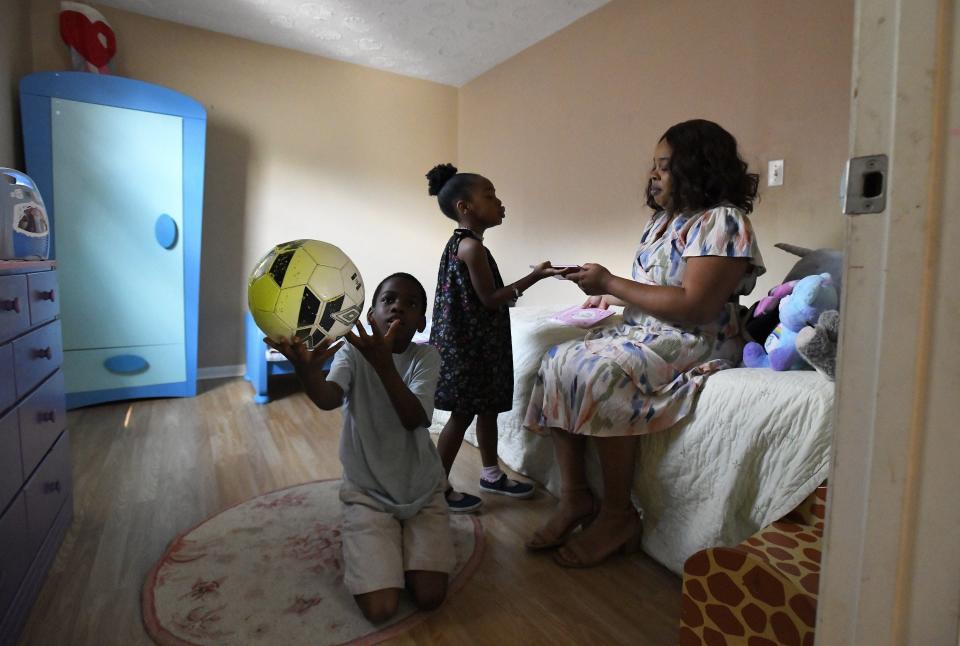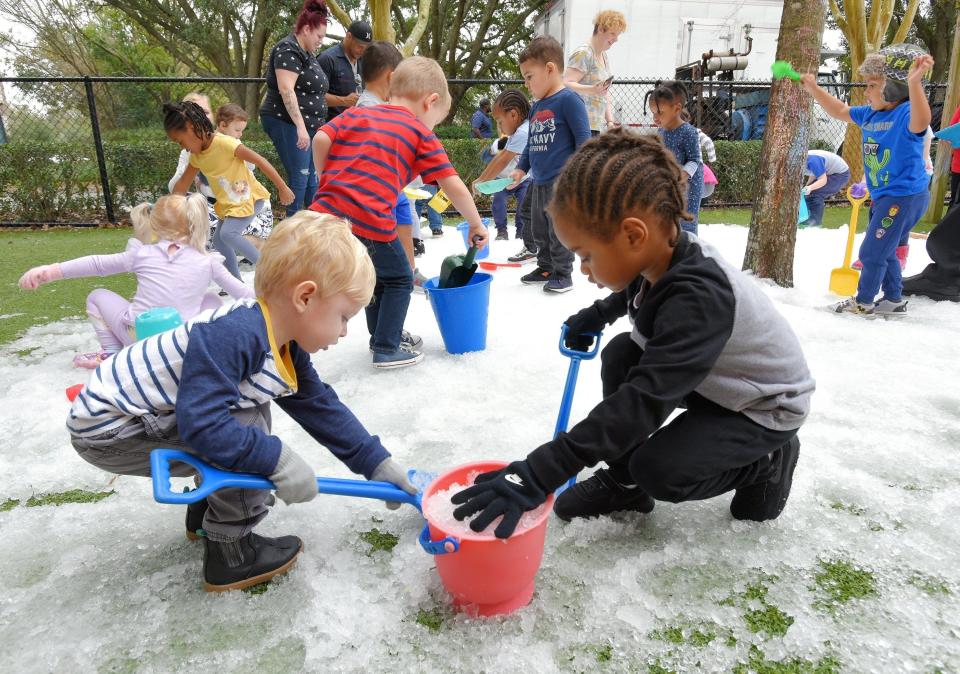'Not accidental': Children fare better in St. Johns compared to less well-off counties
Yes, money talks.
A recent report showed the well-being of children in Northeast Florida and statewide varied widely depending on where they live, with them faring far better in relatively prosperous counties such as St. Johns, Clay and Nassau than in Baker, Duval and Putnam.
The Florida Policy Institute's 2023 Child Well-Being Index ranks counties' performance in four major categories: economic well-being, education, health and family and community. The rankings were developed using data from Kids Count, a national initiative led by the Annie E. Casey Foundation that examines 16 indicators of children’s well-being.
"The outcomes in communities are not accidental. Counties with higher rankings tend to be well-resourced places, where families can afford to invest in things like high-quality child care, education and other opportunities for their children," according to the Florida Policy Institute.
"Counties that rank near the middle tend to have a mixture of well-resourced and less well-resourced areas, such as some larger counties with a combination of big cities and suburban and rural areas," the institute said, while lower-ranked counties "tend to be places that have borne the brunt of the state’s disinvestment in public services and where people face historic barriers to economic opportunity."

How did Northeast Florida counties fare in the child well-being report?
St. Johns County topped the list, followed by Clay at No. 3, Nassau at No. 6, Baker at No. 35, Duval at No. 45 and Putnam at No. 65.
About 1.9% of St. Johns children live in high-poverty areas, compared to 34.5% in Putnam, according to the report. St. Johns is the third-wealthiest county in Florida and one of the fastest-growing in the state and nationwide.
But a 2023 report on the working poor showed that almost 40% of Northeast Florida households — at least one in three — struggled to make ends meet during the COVID-19 pandemic. Even before the pandemic and during the rising inflation that followed, a wide range of systemic issues caused economic and racial disparity, local nonprofit leaders said.
What are the factors at play in child well-being?
Family income is a primary factor because it impacts so many other factors, such as a family's access to quality child care, housing, health care, education and employment, according to Elissa Barr, a public health department professor at the University of North Florida's Brooks College of Health.
"It's definitely an income thing … in the disparity that we see," she said. A child's education, for instance, depends on whether a family has the "resources to get them in school and keep them in school." Such resources can include parents having jobs, vehicles and health insurance, she said.
Nemours CEO: Improving children's health 'inextricably linked' to growing Florida economy
Also, the better the job the better the health insurance, but the loss of a job can mean no health insurance. "It's an unfortunate cycle," Barr said.
She cited the U.S. Centers for Disease Control's disparity factors: Poverty, environmental threats, inadequate access to health care, individual and behavioral factors and educational equalities.
How do the lower-ranking counties improve child well-being?
"Care for our children takes a village," said Allegra Jaros, president of Wolfson Children’s Hospital in Jacksonville. As Northeast Florida’s only children’s hospital, Wolfson "serves a significant role" and is working to increase access to care and advocate for families who lack needed resources, she said.
"Nutrition, safety and many other social determinants of health can have more influence on their health and well-being than anything else," Jaros said. "That's why, as part of Baptist Health, we place a significant focus on addressing community health needs through collaborative partnerships and strategic initiatives."
Adolescent mental health is a current Wolfson focus, she said.
Mark Woods: No place for mental health care in schools? Talk about endangering children.
"We don't do this work alone — it requires effective public-private partnership," Jaros said, citing the need for increased Medicaid reimbursement and funding for community-based behavioral health programs.
Is there reason for optimism about Florida child well-being?
Nemours President and CEO R. Lawrence Moss said Florida, in overall Kids Count data, shows "continued improvements as our state and nation have emerged from the impacts of the pandemic." The state has made "tremendous strides" in the rankings over the last five years, he said.
"Prioritizing child well-being is on all of us — citizens, business and industry, and government," Moss said. "The question becomes how we can best work together to ensure that strengthening families and improving child well-being is strongly considered when prioritizing investments in our communities."
Such priorities must address the "social determinants of health," which access to food, education and safe, affordable housing, he said. "All children deserve a pathway out of poverty and a path to a healthy, productive future."
How can the Florida Chamber's 2030 Blueprint help?
Moss said, "Nemours is in the business of creating health, not just treating disease … This means going outside the walls of our hospitals and clinics and being the conveners of partners who can improve the health of Florida’s children."
So Nemours supports the Florida Chamber's 2030 Blueprint, a long list of targets designed to strengthen communities and business. Among those targets are cutting childhood poverty in half, preparing 100% of children for kindergarten and ensuring that at least 60% of Floridians age 25 to 64 have a postsecondary certificate, degree or training.
"Strong evidence shows that addressing childhood poverty is essential to child well-being and has been linked to better brain development and academic achievement," he said, adding that education is key. "Comprehensive birth-to-five early childhood education is the most powerful lever and most cost-effective way to mitigate the negative consequences of income disparities on child development and adult opportunity."
Also, education or training after high school, he said, "has been shown to add more quality-adjusted life years … than many preventative health services like cancer screenings, smoking cessation, mammograms and more."
What about child care?
Florida Policy Institute President Sadaf Knight recommended legislation to increase eligibility for child care subsidy vouchers and to extend voluntary pre-kindergarten to cover eight hours. Those changes, she said, "would go a long way in alleviating financial stress on families and providing quality early learning for Florida's children."
Child care costs average about $9,000 for each child in Florida, according to the Institute.
Norin Dollard, the Institute's senior policy analyst and Kids Count director, said the child well-being indicators "are all interrelated — for instance, investments that make child care more affordable are related to economic independence and reductions in child poverty."

What should Gov. Ron DeSantis and the Legislature focus on?
Knight said the Florida Policy Institute encourages Florida lawmakers to use the index as a roadmap to which areas of the state are in the greatest need of resources.
The institute recommends:
Expanding basic household supports such as nutrition, housing and income assistance.
Investing in affordable, quality early learning, thriving public schools, and well-supported teachers.
Building a stronger workforce by expanding access to higher education and job training.
Ensuring all Floridians have access to affordable, quality health care.
bcravey@jacksonville.com, (904) 359-4109
This article originally appeared on Florida Times-Union: Florida institute ranks St. Johns County as best for child well-being

